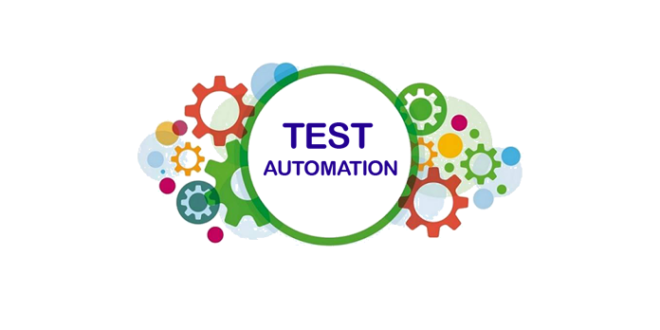Automation Testing Methods: Ideal Practices for Seamless Assimilation
From Guidebook to Automated Screening: A Comprehensive Overview to Transitioning Efficiently and Effectively
In the world of software program screening, the change from handbook to automated procedures has actually ended up being a progressively important transition for companies looking for to enhance effectiveness and accuracy in their screening techniques. The journey from guidebook to automated screening is not without its difficulties, however when approached tactically and with a clear plan in mind, the benefits can be significant.
Benefits of Automated Examining
Automated screening supplies numerous advantages, improving effectiveness and precision in software program development procedures. Automated examinations can be run at the same time on several gadgets and running systems, considerably speeding up the screening stage contrasted to hand-operated screening.
Additionally, automated testing guarantees a higher level of precision in identifying defects. Uniformity in testing is additionally enhanced, as automated tests perform the exact same actions precisely each time they are run.
Selecting the Right Devices

Firstly, assess your requirements and objectives. Understand the range of your project, the technologies involved, and the ability of your team. This evaluation will certainly assist you establish the capacities and attributes you call for in your screening tools.
Secondly, think about the compatibility of the tools with your existing procedures and systems. Seamless integration with your current software growth lifecycle is essential to make certain a smooth change to automation.
Furthermore, assess the scalability and flexibility of the devices. As your screening needs progress, the devices ought to be able to adjust and fit modifications effectively.
Last but not least, variable in the assistance and neighborhood around the tools. Robust support and an energetic individual community can give useful resources and assistance when implementing automated screening. By carefully taking into consideration these elements, you can select the right tools that align with your requirements and established the stage for an effective shift to automated screening.
Composing Reliable Test Manuscripts

When crafting examination scripts, it is important to consider the details demands of the software application being evaluated and guarantee that the manuscripts attend to all crucial capabilities. Clear and descriptive naming conventions for examination scripts and test instances can improve readability and maintainability. In addition, integrating error handling devices within the test scripts can aid in determining and addressing have a peek at this site problems promptly.
Moreover, organizing test manuscripts into modular elements can boost reusability and scalability, minimizing redundancy and boosting performance in test manuscript upkeep. Regular reviews and updates to check manuscripts are crucial to equal advancing software application demands and functionalities. By complying with these principles, testers can produce reliable and durable test scripts that contribute substantially to the success of automated screening procedures.
Integrating Automation Into Workflows
Efficient integration of automation tools into existing process simplifies procedures and enhances productivity within software program growth cycles. When incorporating automation into workflows, it is important to determine repeated jobs that can be automated to conserve time and minimize human mistake. By effortlessly incorporating automated screening devices like Selenium or Appium right into the software development lifecycle, groups can accomplish faster comments on code modifications, resulting in quicker bug detection and resolution. This assimilation permits constant testing throughout the advancement procedure, ensuring that any concerns are recognized early on, causing greater software application high quality. Additionally, automation can be made use of to cause examinations immediately after each code devote, giving instant validation and releasing up testers to concentrate on more complex circumstances. Appropriate combination of automation devices calls for partnership between growth, screening, and operations groups to develop a unified workflow that maximizes effectiveness and effectiveness in supplying high-quality software.
Making Sure a Smooth Transition
Successfully transitioning to automated screening entails meticulous planning and cautious implementation to lessen disruptions and maximize performance in the software program development process - automation testing. To make sure a smooth change, it is important to start by carrying out a thorough evaluation of the present testing procedures and determining locations where automation can bring one of the most substantial advantages. company website Involving with all stakeholders early on in the process, including developers, testers, and project supervisors, is essential for garnering support and buy-in for the automation initiative
Communication is key during this transition phase. Clear communication of the goals, benefits, and expectations of automated testing helps to manage any kind of resistance or concerns that might arise. In addition, giving ample training and sources for group members to upskill in automation tools and techniques is vital for ensuring a successful transition.

Conclusion
Finally, transitioning from handbook to automated screening supplies countless benefits, including enhanced effectiveness and dependability. By choosing the ideal devices, creating reliable examination manuscripts, and incorporating automation seamlessly right into operations, companies can ensure a smooth and successful transition. It is important to embrace automation as an Related Site important asset in software application testing processes to improve overall quality and productivity.
In the world of software program screening, the shift from handbook to automated processes has become an increasingly essential change for companies seeking to enhance efficiency and precision in their screening methods. Automated tests can be run simultaneously on numerous tools and operating systems, dramatically speeding up the testing phase contrasted to hands-on testing. Consistency in screening is likewise improved, as automated examinations implement the exact same steps precisely each time they are run.To make sure the successful execution of chosen testing devices, the development of effective examination scripts plays a vital role in validating the capability and efficiency of automated procedures - automation testing. By complying with these concepts, testers can produce efficient and robust examination scripts that add considerably to the success of automated screening processes